On the left, Vergil sits at an ornate lectern with a high-backed chair. While this is not explicitly in the poem, Vergil inserts himself in two places within the first several lines, with the first person verb cano in line 1, and then an appeal to the muse in lines 8-11. The Muse mentioned in line 8 stands in front of Vergil in the center of the image. In the lower right is the Judgment of Paris, which started the events leading up to the Trojan War; the event is mentioned in lines 26-7. Venus, Juno, and Pallas stand next to each other accompanied by their attributes; Paris gives the apple of discord to Venus, who reaches out her hand for it. Behind the three goddesses, Hebe gives Jupiter a cup. This detail comes from the commentary of Servius, who says that Hebe may have given to the gods the cups which Ganymede had the honor of bearing -'"honores' autem dixit vel propter ministerium poculorum, quod exhibuit diis remota Hebe, Iunonis filia" (1.28). Above them, Jupiter in the form of an eagle carries off Ganymede to make him cup-bearer (line 28). At the top of the image is Carthage, with the three Fates, Clotho, Lachesis, and Atropos, sitting in front holding their attributes. Carthage is introduced in lines 12-22, with half a line devoted to the will of the Fates at line 22. The Muse in the center of the image gestures broadly toward Carthage, highlighting its significance (Katy Purington).
Woodcut illustration from the “Strasbourg Vergil,” edited by Sebastian Brant: Publii Virgilii Maronis Opera cum quinque vulgatis commentariis expolitissimisque figuris atque imaginibus nuper per Sebastianum Brant superadditis (Strasbourg: Johannis Grieninger, 1502), fol. 121r, executed by an anonymous engraver under the direction of Brant.
License
Creative Commons Attribution-NonCommercial-ShareAlike

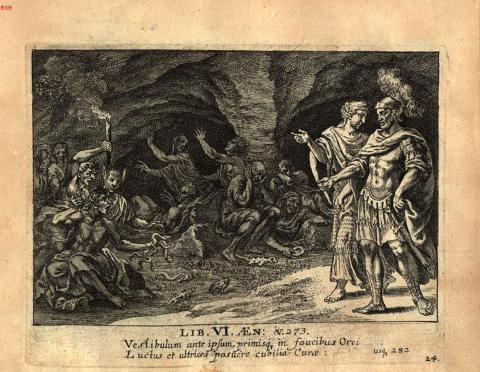
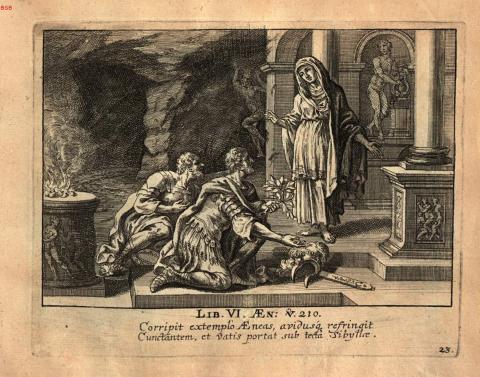
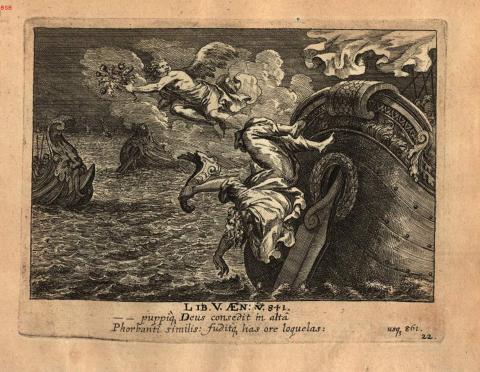

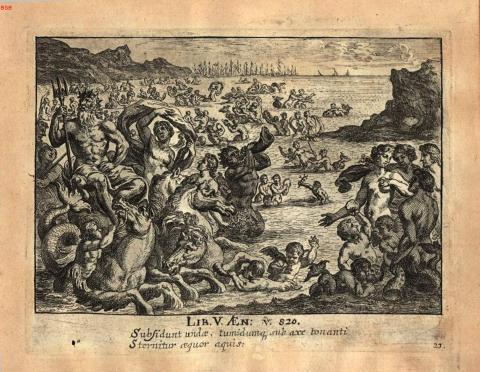
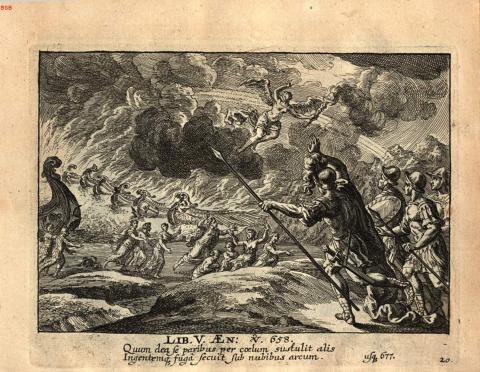

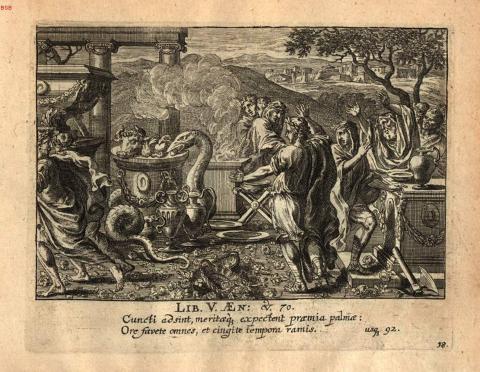
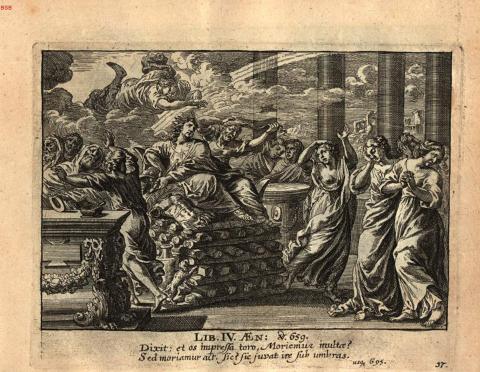
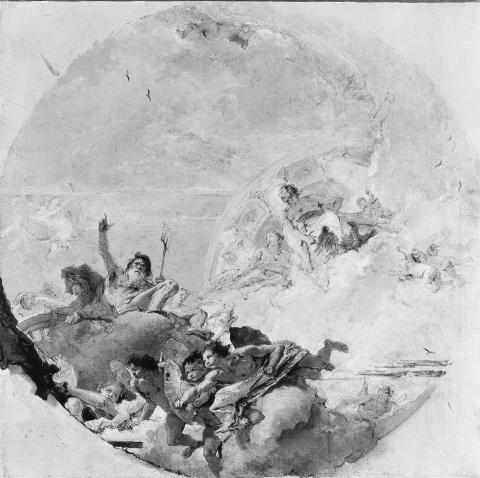
At the entrance to the underworld in lines 275 through 281 Aeneas encounters “pale Disease,” “sad Old Age,” “Fear,” “seductive Fame,” “filthy Need,” “Death,” “Pain,” “Sleep,” “evil Pleasure of the mind,” “death-dealing War,” and “insane Discord, her hair of vipers tied up with bloody bands.” This last one is seen in the right foreground of the engraving clutching three snakes in one hand. Aeneas and the Sibyl are illuminated by an unknown source of light, while the figures she gestures to are invariably in the dark. (Lucy McInerney)